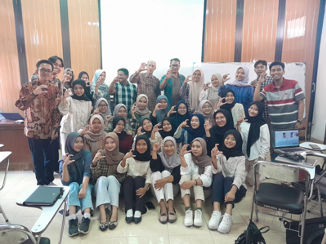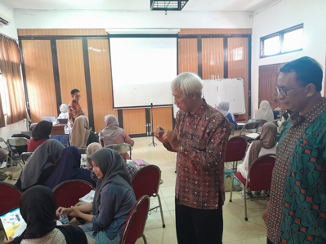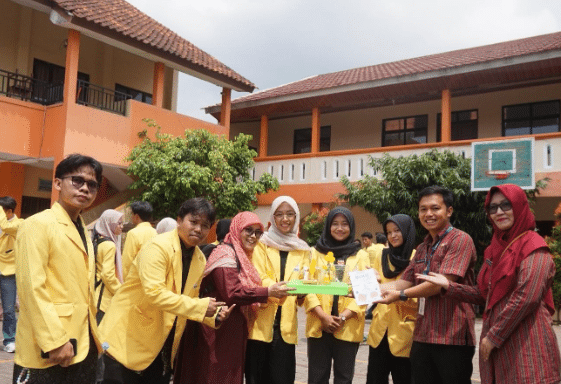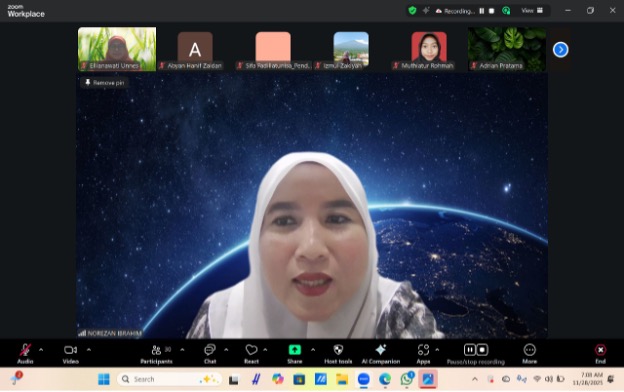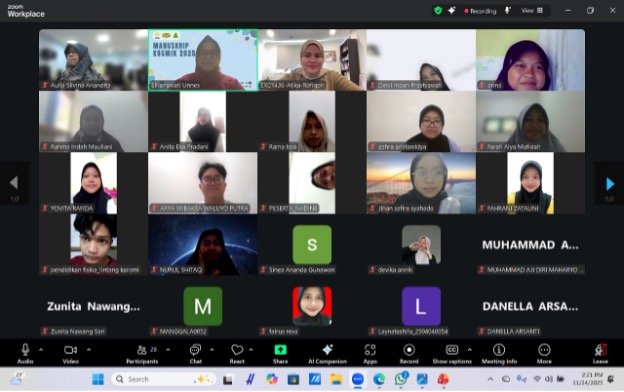The Collaborative research team from FMIPA led by Prof. Dr. Sudarmin, M.Si conducted downstream collaborative research and expertise in the Science Education Department of FMIPA UNESA. This activity is a form of implementation of research collaboration between UNNES and UNESA through the RKLIRKLI-ALPTKNI Scheme consisting of former LPTKs that have been PTNBH. In this activity, the theme raised in the collaborative research is the Reconstruction of the Integrated Ethno-SSI Inquiry Project Learning Model (MPPjI) Based on the Engineering Design Process (EDP) for the Actualization of SDGs in the Education and Environmental Sectors. This research aims to develop an Inquiry project learning model with an Etnoscience and Socialscientific Issue (SSI) approach which in the context of science learning utilizes Virtual Reality technology media. In this activity, the material presented by Prof. Dr. Sudarmin, M.Si for undergraduate science study program students for undergraduate, master, and pre-lecturer programs is related to (1) reconstruction of integration patterns between inquiry project learning models with Etno-SSI assisted by Etno-Virtual media, (2) conceptual and procedural frameworks, philosophical and pedagogical foundations, and TPaCK related to the developed learning model, (3) local wisdom topics that can be used as learning resources for Etno-SSI, namely the topic of traditional batik waste, the topic of herbal medicine and health, the topic of culture and tea for health, and the topic of Mangrove forests and the environment; (4) in the last activity, the Etno-VR media development activity was carried out related to the content and context of Etno-SSI. In this activity, the research partners and actively involved were Beny Setiawan, M.Pd, PhD, Prof. Dr. Erman, M.Si, and two assistants from UNNES who were involved in this research, namely Hafids and Yasmin. At the end of the activity, a Q&A session was held and participants responded to the collaborative research downstreaming activity, and the students were very grateful for the useful knowledge they received, and were ready to collaborate in creating Ethno-VR media for the output of this research activity. At the end of the activity, a group photo and FGD were held to complete the collaborative research output that had been set.
